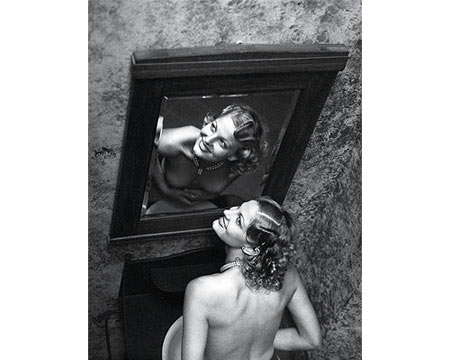Stanko Abadzic
at Verve Gallery, Santa Fe, New Mexico
Recommendation by Kathryn M. Davis
 Stanko Abadzic, 'Happiness, Prague,' 2000, gelatin silver print, 14 1/2 x 10 3/4'.
Stanko Abadzic, 'Happiness, Prague,' 2000, gelatin silver print, 14 1/2 x 10 3/4'.
I approached Stanko Abadzic’s show of black-and-white photographs ready to consider them solely on their visual merits. I was rewarded by prints with an appeal straight out of the historic photographers’ cooperative known as Magnum, which in turn is based on Henri Cartier-Bresson’s “decisive moment.” (Rather true to Magnum form, Abadzic worked as a photojournalist during his homeland’s civil war in Croatia.) Abadzic may be lifting whole from a genre in classic photography, but for him to do so today is less a case of self-consciousness than proof of the timelessness of the medium itself, in the right hands.
Abadzic’s tight, formal compositions are treasures. Yet within their pleasing aesthetics lies the wonder of everyday life — mostly in Prague in this series — that are so very human they could be set anywhere, anytime in the last century or so. A child kicks up her legs in a field while one of her playmates idly contemplates a boat that has somehow landed, Ark-like, on dry land. It all seems perfectly natural — light and shadow, line and form coming together to create the sort of thing that film seems made to catch: the truth of being, and the beauty of action.
I approached Stanko Abadzic’s show of black-and-white photographs ready to consider them solely on their visual merits. I was rewarded by prints with an appeal straight out of the historic photographers’ cooperative known as Magnum, which in turn is based on Henri Cartier-Bresson’s “decisive moment.” (Rather true to Magnum form, Abadzic worked as a photojournalist during his homeland’s civil war in Croatia.) Abadzic may be lifting whole from a genre in classic photography, but for him to do so today is less a case of self-consciousness than proof of the timelessness of the medium itself, in the right hands.
Abadzic’s tight, formal compositions are treasures. Yet within their pleasing aesthetics lies the wonder of everyday life — mostly in Prague in this series — that are so very human they could be set anywhere, anytime in the last century or so. A child kicks up her legs in a field while one of her playmates idly contemplates a boat that has somehow landed, Ark-like, on dry land. It all seems perfectly natural — light and shadow, line and form coming together to create the sort of thing that film seems made to catch: the truth of being, and the beauty of action.

